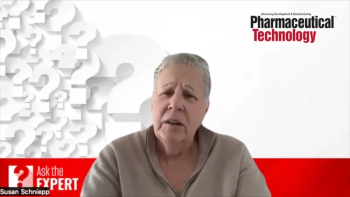
Driving Quality from the Top: Merck Manufacturing Leader’s Pitch to PDA Regulatory Conference Audience
Key Takeaways
- Quality leadership is essential across all functions, from R&D to commercial supply, and cannot be delegated.
- External partners must align with internal quality standards, with oversight and support to address compliance issues.
Merck’s Sanat Chattopadhyay called for stronger leadership, data-driven oversight, and shared accountability to raise pharmaceutical quality standards.
Why is quality a leadership imperative?
“Quality, at its core, is our contract with patients,” Chattopadhyay said, “that the products we deliver will be safe, will be reliable, and the very best we can offer ... That focus ... can never, never, never waver” (1).
Chattopadhyay’s talk,
The message of the presentation was clear: that quality leadership must extend from R&D to commercial supply and across global partner networks.
How can quality be embedded across functions?
Chattopadhyay described Merck’s mantra (“safety first, quality always, and inclusion for all”) as a visible and constant reminder across facilities and teams (1). Yet he stressed that slogans alone are insufficient.
“Quality is an ecosystem woven across every function,” Chattopadhyay said (1). “It cannot rest solely on the shoulders of the quality organization.”
This means that business unit leaders, not just quality heads, are to be held accountable when issues arise. Chattopadhyay emphasized that empowerment at the front line—for example, operators speaking up about deviations—must be celebrated, not penalized.
So, he said, there must be a shift in thinking, to make quality a consideration in project management, procurement, and information technology, not as an afterthought but as an integrated responsibility.
What pressures affect external partners?
The speech highlighted the challenges posed by contract manufacturing organizations (CMOs) and other external suppliers.
“Delegating quality is never an option,” Chattopadhyay said, addressing this topic (1). “Patients deserve better.”
While CMOs provide agility and speed, he explained, they also face higher rates of compliance issues. Merck’s response, according to Chattopadhyay, has been to embed oversight, provide technical support during regulatory reviews, and, when necessary, limit business with noncompliant partners. This underscores the strategic need to align external partners with internal quality standards while maintaining collaborative problem-solving.
How are data, digital tools, and AI shaping pharma quality?
Chattopadhyay pointed to digital transformation as a force multiplier for compliance and oversight.
“Data integrity tools and agentic AI [artificial intelligence] promise to extend our oversight like never before,” he said, “detecting anomalies, performing root cause analysis, and analyzing trends almost instantaneously” (1).
Chattopadhyay described pilots for remote, real-time monitoring of CMO operations, allowing 24/7 visibility into manufacturing data. The near-term vision includes facilities with AI-assisted operators, “zero deviations” as a realistic goal, and reduced product shortages through standardized datasets.
For discovery and development teams, the implication is twofold: Early process design must anticipate data-driven oversight, and organizations will need to invest in informatics and harmonized datasets to enable regulatory acceptance.
How can companies balance speed, cost, and compliance?
Leaders face difficult trade-offs, according to Chattopadhyay, between delaying launches to resolve issues, committing resources to exhaustive investigations, or redesigning processes when impurities or other risks are detected.
“It’s not about patching today’s problems; it’s about safeguarding tomorrow,” he said (1).
This approach aligns with regulators’ increasing expectations for proactive quality management, particularly under
What is the outlook for pharma quality for the 2030s?
Looking ahead, Chattopadhyay predicted that by the start of the next decade, more facilities would be fully automated, operators would routinely use AI support, and regulators would have real-time visibility into global manufacturing networks. Product shortages, he argued, should be less common, and patient confidence stronger.
His closing reminder was directed at all leaders.
“It all starts at the top,” Chattopadhyay said. “In every facet of how we work, we must prioritize quality on behalf of our patients ... It’s more important to be good than to look good” (1).
The plenary session, entitled "The 'Q' Also Applies to 'U,'" was moderated by Irving Ford, vice-president of Quality at Adaptimmune, with Chattopadhyay's presentation followed by a panel discussion involving Lothar Halmer, PhD, chief quality officer at Boehringer Ingelheim; Paul Houri, senior vice-president and chief quality officer at Bristol Myers Squibb; Maja H. Pedersen, chief technology officer and executive vice-president at FUJIFILM Biotechnologies; and Adrian Rawcliffe, chief executive officer of Adaptimmune.
References
1. Chattopadhyay, S.
2. FDA.
3. Eglovitch, J. S.
Newsletter
Get the essential updates shaping the future of pharma manufacturing and compliance—subscribe today to Pharmaceutical Technology and never miss a breakthrough.




